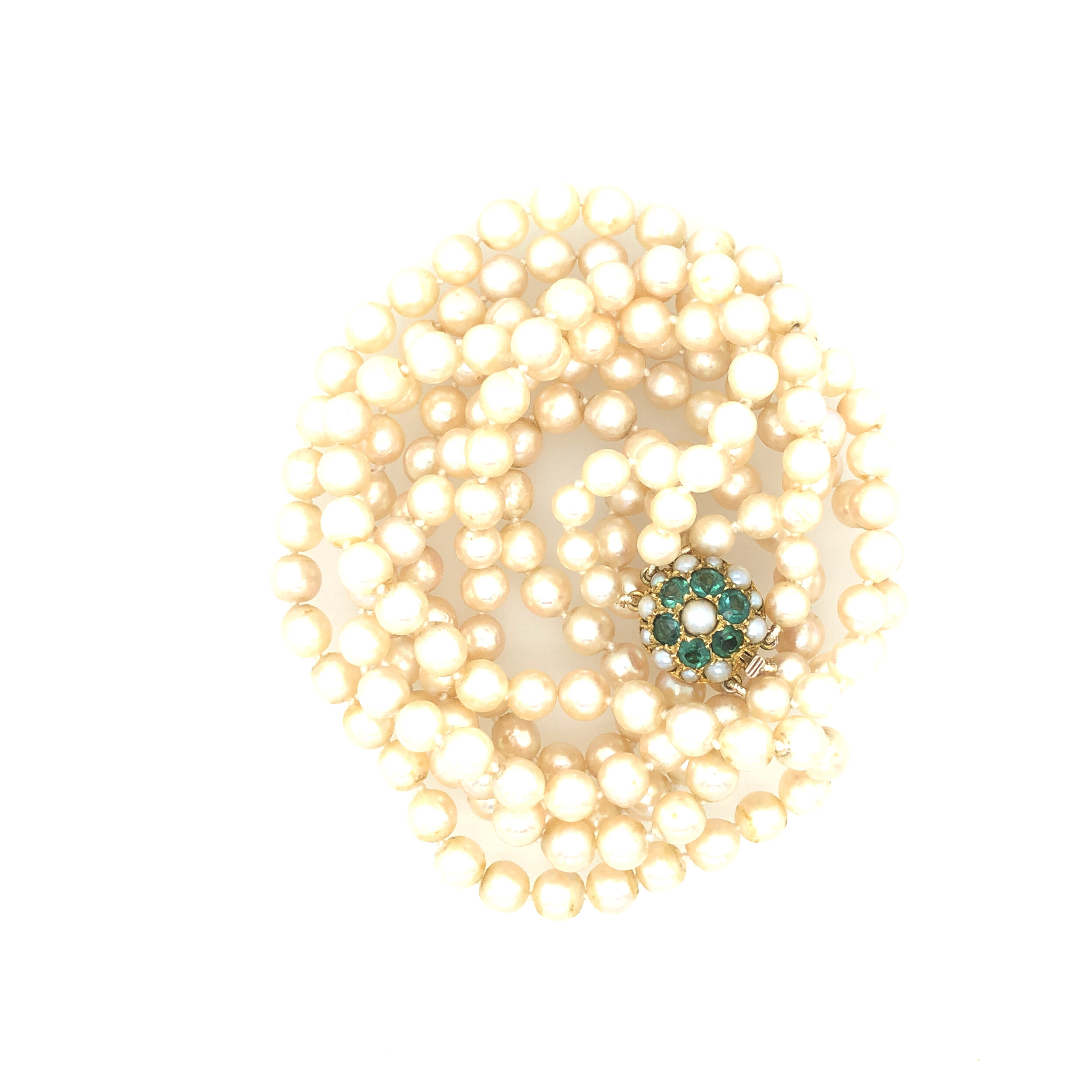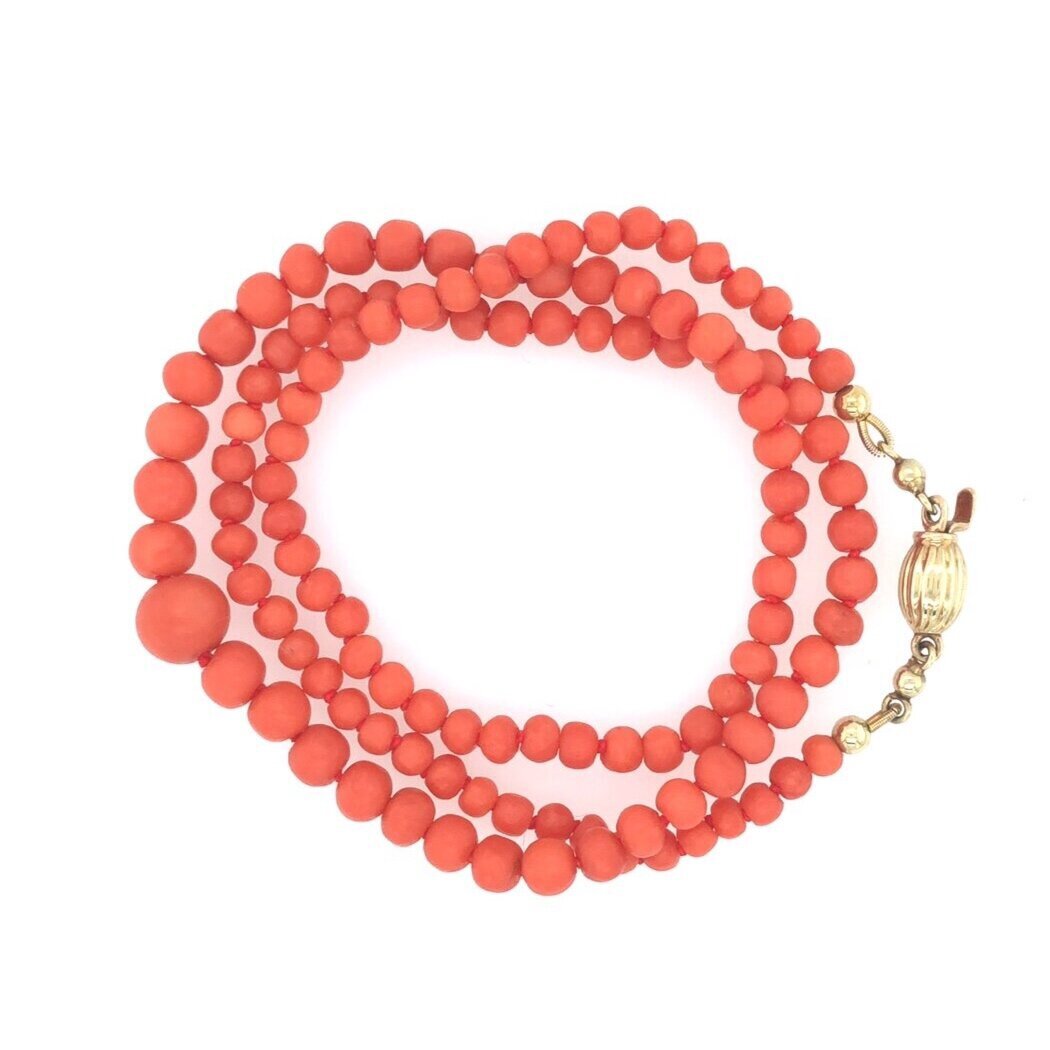When you purchase vintage from us, you are acquiring a high-quality item in a sustainable way. Choose wisely and treat your jewellery well and you too can pass it onto the next new owner. Many of the tips below apply to all your jewellery, not just your vintage items.
Wearing your jewellery
Perfume and skincare products can cause jewellery to tarnish or discolour and for some soft gems, like pearls, can lead to permanent damage. It is best to apply skin creams, cosmetics and perfume before you put on your jewellery. Remove jewellery before exercising, such as gardening or a gym workout. This can prevent accidental damage during activity but also perspiration can contribute to the tarnishing of jewellery. Furthermore, chemicals found in swimming pools can cause tarnishing and so remove jewellery before entering the pool.
Storing your jewellery
It is important to store each item of jewellery on its own, so that items do not rub and scratch against each other. The majority of our jewellery is sent in a reusable branded jewellery pouch and/or box. This is ideal to store your piece and will keep it protected an
d reduce tarnishing. You can also store your jewellery individually in a small zip lock bag as exposure to the air can cause your jewellery to tarnish over time (this method is not suitable for pearls). To avoid plastic you can wrap your jewellery in acid free tissue paper. Finally, do not store jewellery next to a radiator, on windowsills or in the bathroom as damp, or hot, conditions can cause tarnishing.
Cleaning your jewellery
Most gold and silver jewellery, including jewellery with diamonds or coloured gems, can be cleaned with warm water, mild dish soap (avoid detergents) and a clean, soft brush (such as a baby toothbrush or a soft makeup brush). Soak the item in warm water with a drop or two of dish soap and leave for 20 to 30 mins then gently brush with the soft brush. Dry with a soft towel or lint-free cloth.
You can also use plain or impregnated jewellery cleaning cloths – you can purchase ones that are produced fo r either gold or silver. They can effectively remove tarnishing from silver items but may also remove the patina of an item and so test on the inside or unexposed area of the jewellery.
r either gold or silver. They can effectively remove tarnishing from silver items but may also remove the patina of an item and so test on the inside or unexposed area of the jewellery.
Small ultrasound cleaners are available to purchase for home use. These should be used with caution as although they can be effective in cleaning gold jewellery they carry
the risk of dislodging loose stones or damaging stones with limited durability. Emerald, onyx, opal, tanzanite, lapis lazuli and turquoise are all examples of stones that should not be put in an ultrasonic cleaner. Furthermore, amorphous or organic gems such as pearl, coral and amber could be ultrasonic cleaner. Even diamonds, which are considered a stable and durable gemstone, may contain inclusions that are at risk of damage by the ultrasound vibrations.
It is important to clean your jewellery regularly, however, if you are unsure how to go about this, or concerned that the piece might have a loose stone, then visit your local jeweller to have the item cleaned.
Caring for pearls

Pearls like to be worn. Pearls are an organic material and can dehydrate without contact with the moisture content in the air. However, pearls can be damaged by perfumes, skin creams and hair products - so remember put pearls on last and remove them first
Storage: Do not store pearls in plastic bags or jewellery boxes as this can cause scratches and dehydrate the pearls. A pouch made from silk or soft fabric is ideal for storing pearls. Pearls, especially pearl necklaces, should be stored flat and any claps should be fastened avoid tangles or scratches. Pearls can become dehydrated due to lack of humidity and so try not to store in spaces such as a safe/security box. Finally, keep away from heat as this can lead to cracked nacre, discolouration or splitting.
Cleaning: Soft gems, such as pearls, can easily scratch. After wearing gently wipe the pearls with a clean, soft cloth before storing. You can also use a new, clean makeup brush and warm, soapy water to softly clean them. Do not dry them but rather leave a strand of pearls on a towel until it is completely dry as the wet silk thread can stretch − and attract dirt.
Caring for your coral pieces

The antique coral jewellery we stock, like pearl, is very soft and needs to be treated with care. It should only be put on after perfume and make-up application.
Storage: Store coral in a soft jewellery pouch or in its own till in the jewellery box so that it’s not scratched. Larger pieces of coral jewellery should be wrapped in tissue so they don’t scratch other objects beside them.
Cleaning: Coral should be cleaned with a soft, clean cloth, and then rinsed in warm, soapy water. Do not soak coral items and never use an ultrasonic cleaner to clean. If the coral is dusty, you can use a can of compressed air (which can be bought at an office supply store) or the coral can also be rinsed in a bowl, and then dried thoroughly with a soft cloth.
